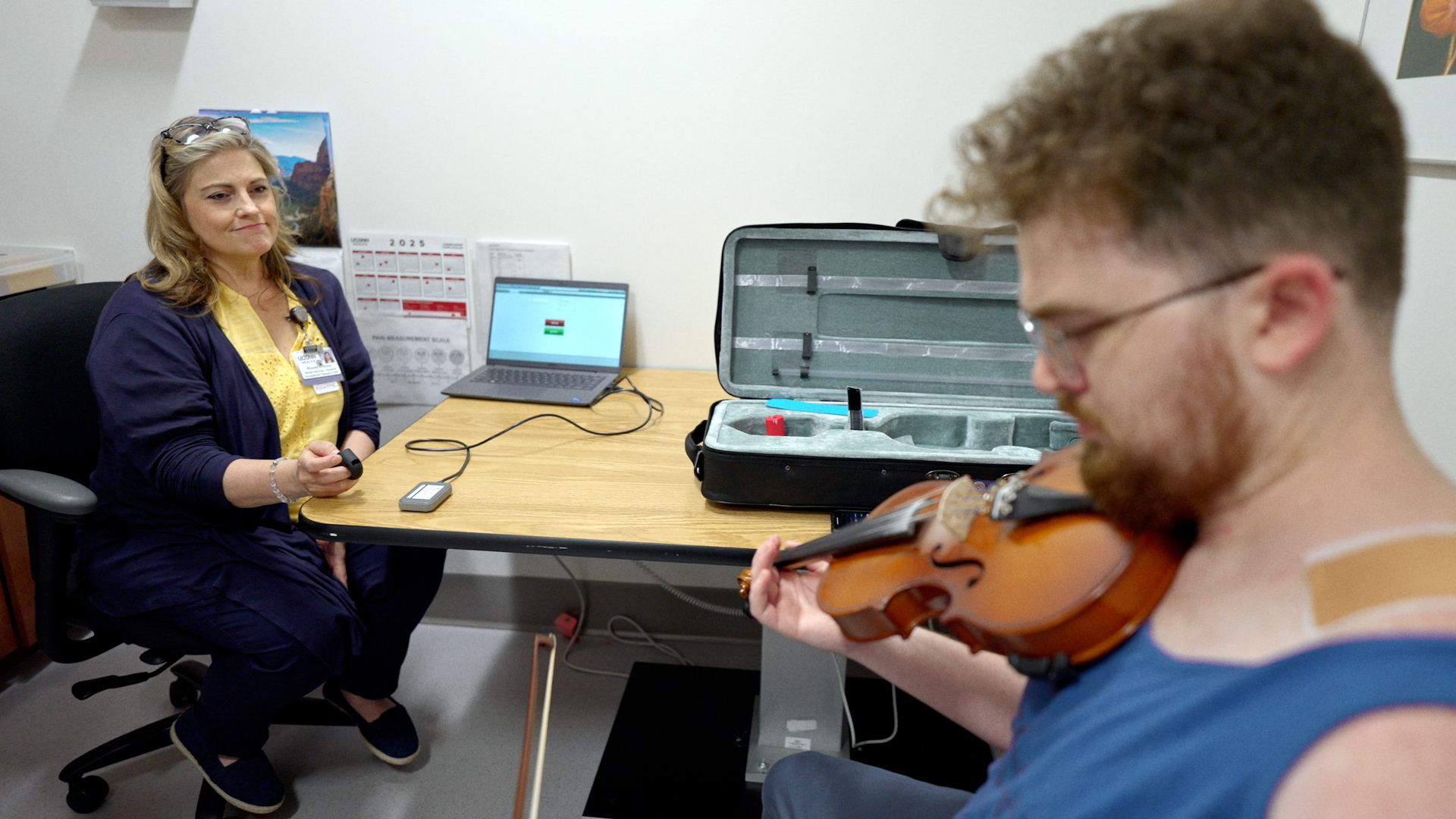According to the CDC, each year 2.5 million older people are treated in emergency departments for fall injuries.
“We are more prone to falls are we age,” says Jeffrey Kinsella-Shaw, associate professor in the Department of Kinesiology and director of the Doctor of Physical Therapy Program (DPT). “Keeping people from falling and hitting the ground is hugely important, as falls are the fourth biggest killer of Americans over the age of 65.”
While a physical therapist at Windham hospital, Kinsella-Shaw directed a fall risk reduction program and support group for patients with Parkinson’s disease and multiple sclerosis, as well as stroke survivors. Working with these patients gave him an insider’s view into living with balance issues.
His current research focuses on two areas. The first is looking at the biophysics of postural control, evaluating fall risks and examining how aging in the brain and other perceptual systems affect movement and balance.
His other area of interest is determining how exercise affects neurotrophic factors in the brain relating to aging, to improve short term and spatial memory as well as stave off major depressive disorders often seen in elderly patients. This research will be done at UConn’s newly constructed Brain Imaging Research Center (BIRC).


